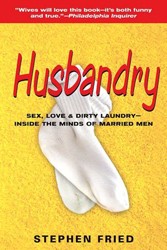During the early 1950’s, Sid Caesar was an American pop culture icon of unparalleled eminence. He was one of the highest paid entertainers of his day, pulling down close to $1 million a year at a time when movie tickets cost less than 50 cents. Marilyn Monroe and Albert Einstein actively sought him out. And movie producers lobbied to have their latest releases parodied on his live TV show, knowing that a Caesar parody virtually guaranteed huge box office receipts.
Today, however, the public has little direct knowledge of Caesar. Like the figures at the mouth of Plato’s cave, he is generally perceived by the shadows he has cast. His “writers’ room” — which included such landsmen as Neil Simon, Mel Brooks, Carl Reiner and Woody Allen — is far better known today than its presiding genius. More Americans have probably seen any one episode of The Dick Van Dyke Show (which was created by Reiner, based on his experiences in the writers’ room) than would be able to identify Caesar from a photograph.
The obvious reasons for this are easy to enumerate. Caesar’s best work was done in the early days of an essentially ephemeral medium. Although kinescopes of his TV shows have survived, their technical quality is questionable (although they are now being digitally restored). More importantly, sketches on Caesar’s shows sometimes ran more than 30 minutes in length, and Caesar will not permit them to be interrupted by commercials, so syndicated rebroadcasting is out of the question. Finally, Caesar’s career as a comedian did not successfully extend beyond his achievements in live TV. He has appeared in a long string of minor roles in mostly undistinguished films, and while a compilation of kinescoped sketches was released under the title “Ten from Your Show of Shows” in the 1970s, it did not find a broad audience.
There is a certain pathos to this, which suffuses Caesar’s Hours. On the surface a standard, anecdote-strewn celebrity autobiography, it barely conceals a deeper agenda: to restore Caesar and his work to their rightful place in the comic pantheon. It does not really succeed at this. Caesar’s extended descriptions of his more noteworthy sketches don’t read very well; the book directs readers to a website where DVDs of the digitally restored kinescopes are on sale, as if to acknowledge that a book is no substitute for the original experience and an inadequate place to argue its value.
Caesar concurs with many people who worked with him that he was painfully shy in person and could only function confidently behind the mask of a character. Unfortunately, the book glosses over this attribute and his related struggle with alcoholism and drug addiction. Even as he shines the spotlight on himself, Caesar remains a largely shadowy figure.

Nonfiction
Caesar’s Hours: My Life in Comedy, With Love and Laughter
- Review
By
– November 10, 2011
Bill Brennan is an independent scholar and entertainer based in Las Vegas. Brennan has taught literature and the humanities at Princeton and The University of Chicago. He holds degrees from Yale, Princeton, and Northwestern.
Discussion Questions

Jewish literature inspires, enriches, and educates the community.
Help support the Jewish Book Council.


